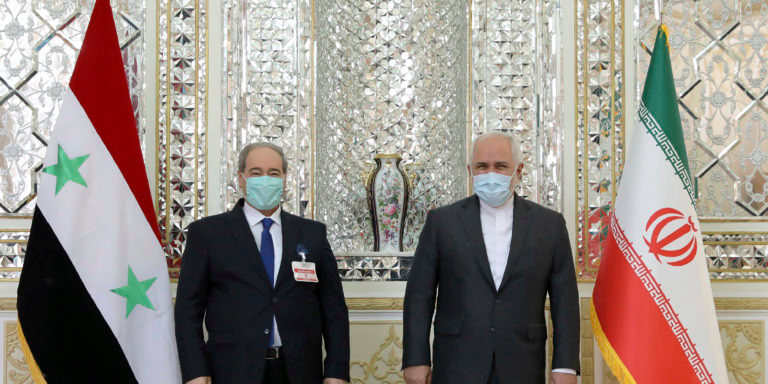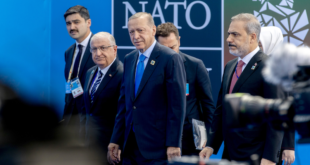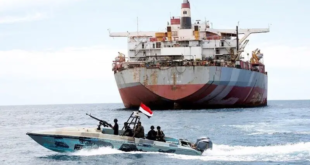
Iran is attempting to consolidate the gains it achieved by intervening and investing extensively in Syria’s civil conflict.
Syria’s Assad regime is facilitating Iran’s plan to develop a secure land-based supply line to Tehran’s main regional ally, Lebanese Hezbollah.
Iran has had mixed success in using Syria to circumvent international sanctions or to provide economic benefits.
Some in – or associated with – the Assad regime are wary of forfeiting Syrian independence and sovereignty to serve Iranian interests.
As the Iranian people prepare to go to the polls to elect a new president in June 2021, Iran’s hardliners seek to advertise the benefits of Iran’s robust financial and military investment in President Bashar Al Assad of Syria. Many Iranians have gone to the streets in recent years in part to protest the diversion of Iran’s limited resources toward this and other regional adventures. However, to those Iranians who support the regime’s strategy of empowering regional pro-Iranian governments and armed factions, the regime can demonstrate that it has achieved significant and tangible gains in Syria. Assad is Iran’s closest allied Arab leader and Iran’s leaders take substantial credit for an intervention that arguably rescued his regime from the brink of collapse. Therein lies the recognition for persuading Russia to intervene on Assad’s behalf – which arguably proved even more decisive to Assad’s survival. With domestic opposition forces largely contained in Syria, Iran seeks to consolidate its gains and obtain some economic return on its financial investment.
Iran intervened in Syria not only to keep its only Arab ally in power, but also to protect its main regional ally and proxy, Lebanese Hezbollah. Having largely accomplished both objectives, Iran has sought to use Syrian territory to open up a secure land corridor to resupply Hezbollah with rockets, short-range ballistic missiles, drones, and other weaponry. Assad has expressed his gratitude for Iran’s help in largely defeating the rebellion by allowing Iran to establish military infrastructure and a Hezbollah supply chain in Syria. Wary of Iran’s use of Syrian territory for these purposes, Israel conducted a strike in January 2021 in eastern Syria, near the border with Iraq, to destroy purported warehouses full of weaponry destined for Hezbollah. Almost all of Israel’s strikes in Syria have previously been conducted in more heavily-populated western Syria. Assad also has cooperated with Iran’s plan to shift the demographic balance of much of western Syria, abutting Hezbollah-controlled territory in Lebanon to Syrians supportive of the Assad regime, Iran, and Hezbollah. Institutionalizing demographic change by capitalizing on forced displacement, the regime has resettled Shias in these areas that Sunni Muslim families fled during the civil war.
Looking to further strategic gains, Iranian leaders, including Armed Forces Chief of Staff Mohammad Baqeri, have expressed an interest in obtaining permanent access to Syrian naval facilities. The aim is to project power into the Mediterranean – similar to that afforded Russia in the Syrian port of Tartus. However, an Iranian naval presence based in Syria would undoubtedly attract attacks by Israel, and no such consistent Iranian access has been established. Some experts have speculated that Assad might accede to Iranian use of Syrian territory to develop facilities related to Iran’s nuclear program or its purported programs to advance its chemical and biological weaponry. Putting elements of these programs “offshore” in Syria would remove them from the scrutiny of international inspectors.
Iran has been markedly less successful in other goals of its Syria intervention – circumventing international sanctions and extracting economic benefits from Syria. Iran remains a minor player in the Syrian economy, despite providing the Assad regime with $4.6 billion in credits since 2012, according to the U.S. State Department; shipments of oil; and investments in Syria’s agricultural, housing, mining, power generation, and telecommunications sector. Syria imports world-class goods from other suppliers and has not become dependent on Iranian exports. Many of the joint economic projects that have been agreed upon between the two governments have not come to fruition by many accounts. Iran’s hopes that Syria can serve as a conduit for banking and other financial transactions that are subject to U.S. sanctions on Iran have not borne fruit, largely because Syria itself has come under increasingly strict U.S. and multilateral sanctions. Syria’s outlet, the Lebanese banking system, has similarly been sanctioned by the Trump Administration and has suffered significantly from Lebanon’s overall economic deterioration over the past few years.
As long as the armed opposition remains in control of even a limited geographic area, the Assad regime will fully cooperate with Tehran. In contrast to Russia, Iran staunchly opposes any negotiated settlement that would dilute Assad’s authority. However, as international attention to the Syrian conflict abates, significant constituencies within the Assad regime will seek to reassert sovereignty and limit Tehran’s influence inside Syria. Tensions might erupt between Tehran and Damascus, but the close bond between the two regimes that has been forged during the Syrian civil war is unlikely to unravel in the foreseeable future. As the new Biden-Harris administration takes the helm of government and focuses on options for engagement with Iran, considering its relationship with Syria, and the ongoing possibility of a resurgent ISIS, will also be critical components.
 Eurasia Press & News
Eurasia Press & News



